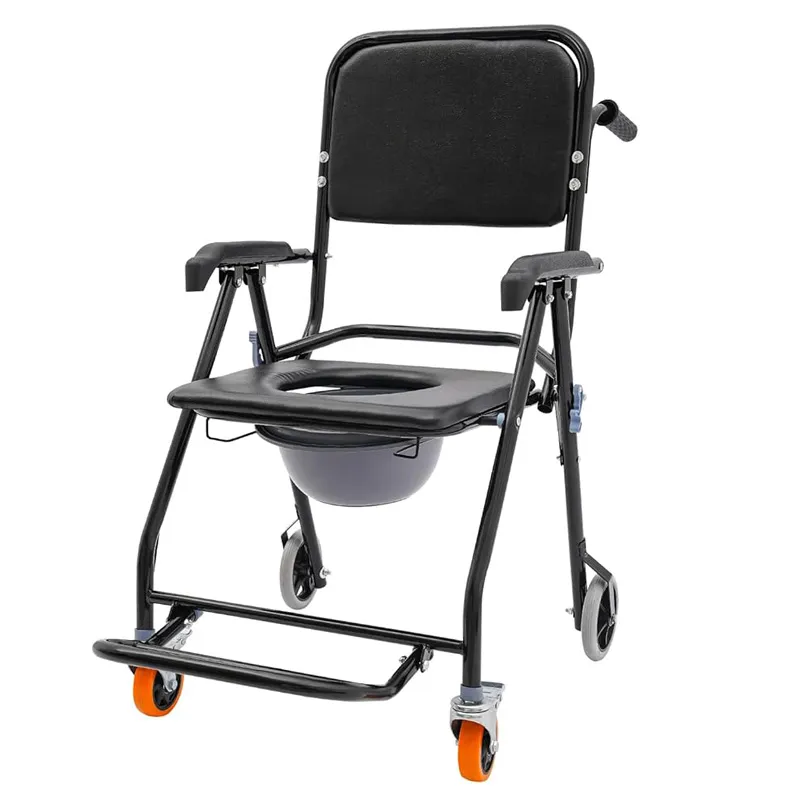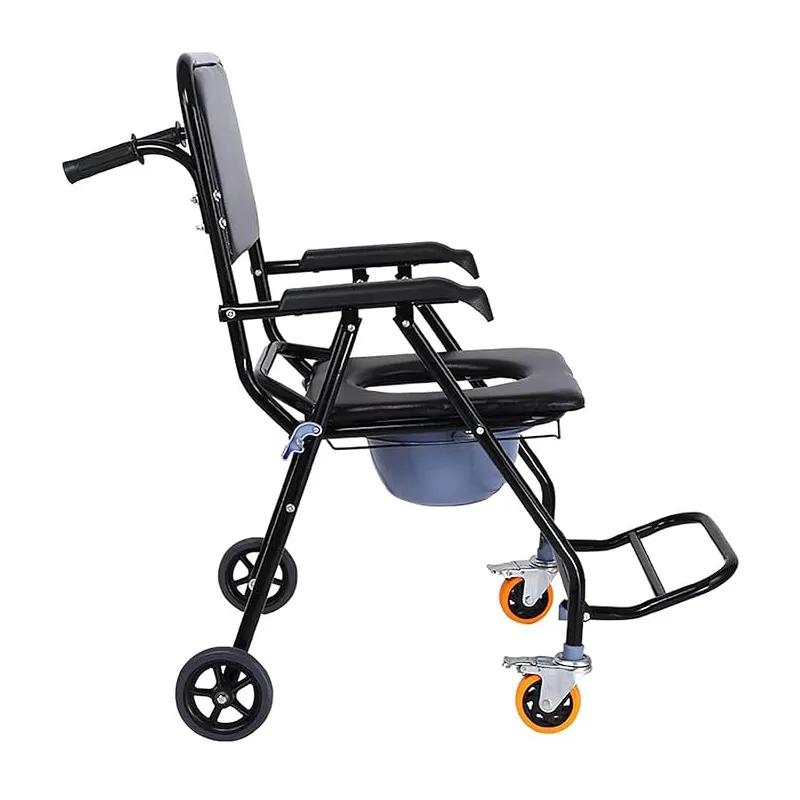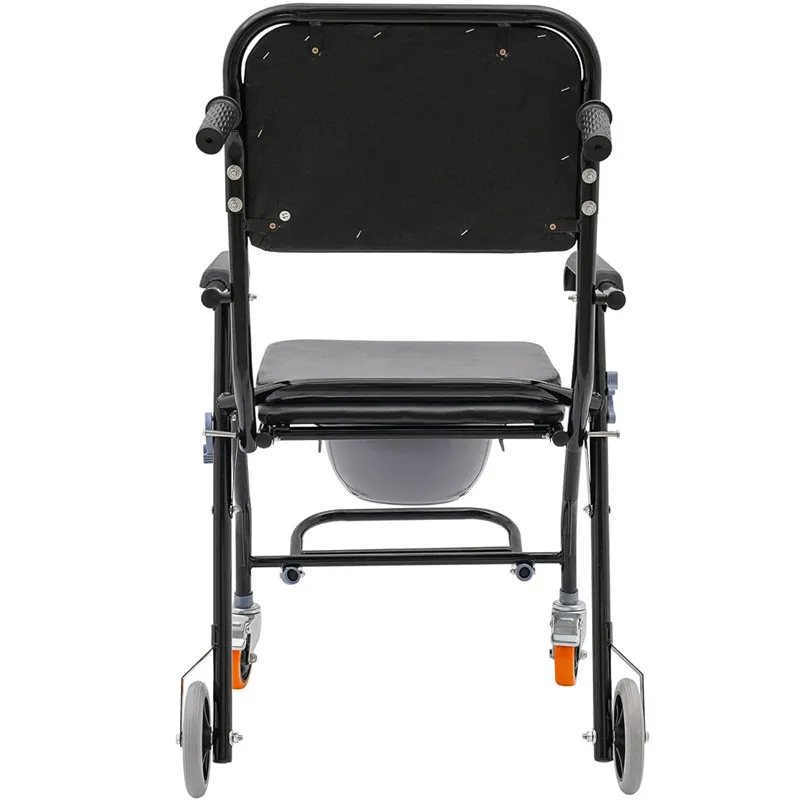Bedside Commode Chair: Adjustable, Modern, Safe—Why Buy?
A Field Note on the Modern bedside commode chair: Design Details, Testing, and Real-World Use
If you work in home care or post-op recovery, you already know: the humble bedside commode chair can make or break a nightly routine. Zhaofa Medical’s Zf-pc215 4-in-1 Folding model—made in Zhouhu Village, Jizhou Zone, Hengshui City, Hebei Province, China—has been making the rounds in procurement chats lately. I’ve seen thousands of these over the years, and this one hits a few practical notes that matter: folding frame, PU sponge padding (read: easier cleaning than fabric), and a steel chassis that doesn’t wobble after the third month. To be honest, that last point is where many budget chairs fall apart.

What’s in the box and where it fits
Package includes: 1 toilet wheelchair frame, 1 chamber pot, 1 cushion, 1 lid, plus the usual assembly bits. Application scenarios? Home recovery (knee/hip), assisted living, rehab clinics, small hospitals, and—surprisingly often—traveling caregivers who need a foldable, trunk-ready unit. The 4-in-1 pitch typically means commode + standalone chair + over-toilet frame + (when appropriate) shower use; always verify anti-corrosion specs first if you plan water exposure.
Materials, build, and test culture
- Frame: powder-coated steel tubing (usually φ22–25 mm); welds should be continuous, not spotty.
- Seat/Cushion: PU sponge padded top over molded substrate for wipe-down sanitation.
- Bucket: PP/ABS polymer with lid; typical spill lip and handle.
- Finish: powder coat ≥60 μm; salt-spray checks (ASTM B117-style) are common in QC, even if brief.
Testing standards to ask about: ISO 17966 for assistive bath/toilet products, EN 12182 for assistive tech, and of course factory QMS certification (ISO 13485 or at least ISO 9001). Real-world service life? Around 3–5 years in home use if you don’t store it in damp basements. In institutional turnover, expect ≈2–3 years due to heavier cycles and chemical disinfectants.

Key specifications (field-verified ranges)
| Parameter | Spec (≈) | Notes |
|---|---|---|
| Overall width | ≈52–56 cm | Fits standard doorways |
| Seat height (adjustable) | ≈40–52 cm | Real-world use may vary ±1 cm |
| Static load rating | ≈130–150 kg | Check certificate for exact value |
| Frame material | Powder-coated steel | Corrosion resistance important |
| Seat/cushion | PU sponge padded | Comfort + easy cleaning |
Process flow (how it’s typically built)
Tube cutting → bending → TIG/MIG welding → deburring → phosphate pretreatment → powder coating → curing → PU cushion molding → seat fitment → bucket + lid assembly → static load test (sample) → carton pack. QC checkpoints usually include weld integrity, coating thickness, odor/bioburden checks on cushions, and dimensional verification.
Vendor comparison (snapshot)
| Vendor | Certs (typ.) | Load (≈) | Lead time | Warranty | Notes |
|---|---|---|---|---|---|
| Zhaofa Zf-pc215 | ISO 13485, CE (declared) | 130–150 kg | 15–30 days | 12 months | Foldable, PU padded |
| Generic Import | ISO 9001 | 100–120 kg | 30–45 days | 6 months | Cheaper, thinner coating |
| Big-Box Brand | CE, local QA | 120–136 kg | Stock | 12 months | Higher retail price |

Advantages, customization, and feedback
- Advantages: foldable frame, padded comfort, quick-clean surfaces, decent load rating.
- Customization: frame color, branding, packaging (retail carton vs. bulk), bucket type, optional splash guard.
- Customer feedback: many users mention stability during transfers; some ask for quieter rubber feet and a softer edge on the seat cutout—minor but fair.
Micro case study
A home-care agency in Toronto swapped 18 legacy units for this bedside commode chair. After three months, reported incidents related to frame wobble dropped to zero; cleaning time per unit fell by ≈18% thanks to PU padding. Tiny sample size, yes, but it matches what procurement folks often predict.
Compliance checklist
Ask your vendor for: ISO 13485 certificate copy, ISO 17966/EN 12182 test reports, load test data (with method), and material safety declarations for PU and coatings. It sounds dry, but it saves headaches later.
References
- ISO 17966:2016 – Assistive products for personal hygiene that support the user.
- EN 12182:2012 – Assistive products for persons with disability – General requirements.
- ISO 13485:2016 – Medical devices – Quality management systems.
- WHO Global Report on Assistive Technology, 2022.




































